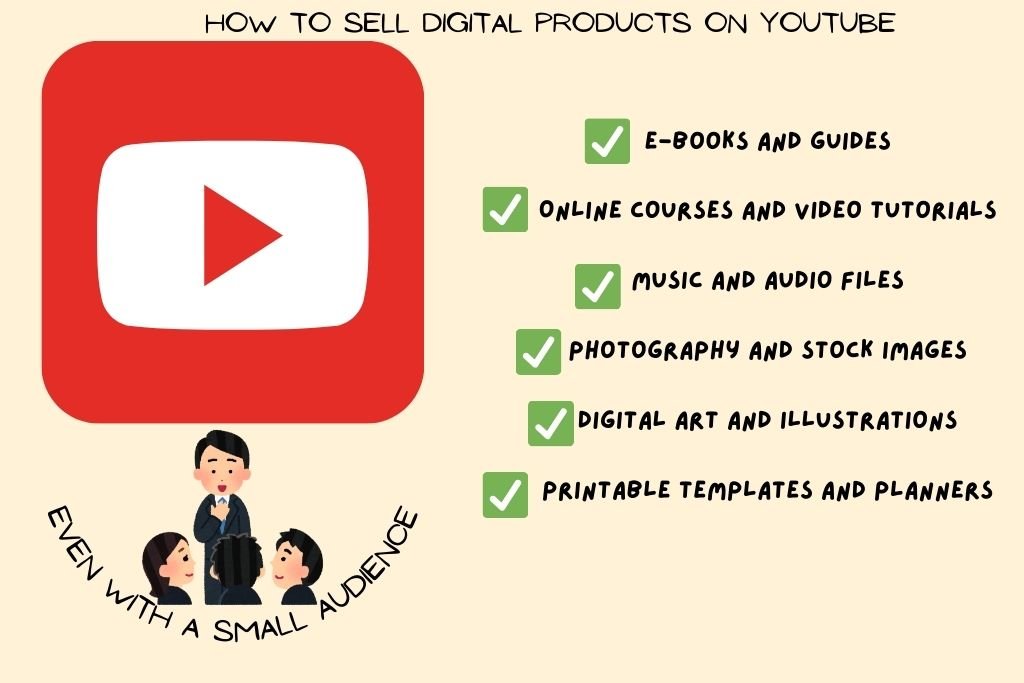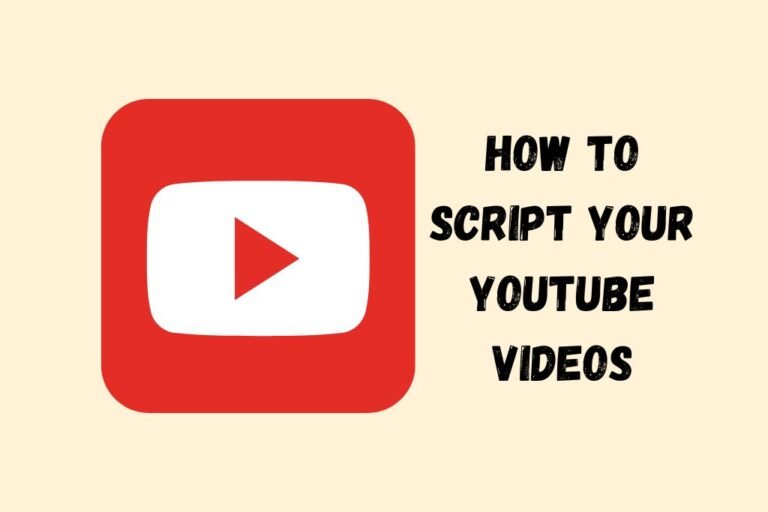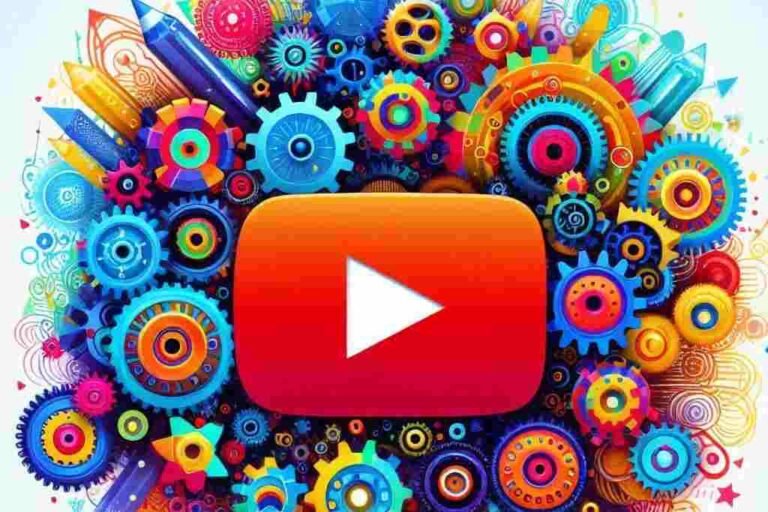How to Sell Digital Products on YouTube (Even With a Small Audience)
In today’s digital age, YouTube has evolved beyond being merely a video-sharing platform; it has become a powerhouse for marketing, branding, and even e-commerce. Many content creators—and even those with modest followings—have discovered that selling digital products on YouTube can be a highly effective way to generate revenue. Whether you’re offering e-books, online courses, printable templates, or exclusive membership content, YouTube gives you a platform to reach a global audience, engage potential customers, and build lasting relationships.
While having millions of subscribers might seem like a prerequisite for success, the truth is that small channels with highly engaged communities can also generate impressive digital product sales. It’s not solely about the volume of your audience; it’s about the connection, trust, and value you deliver to each viewer. This article outlines the step-by-step process to create, market, and sell digital products—even if you have a small audience—and explains why YouTube is uniquely suited for that purpose.

1. The Unique Advantages of Selling Digital Products on YouTube
1.1. Direct Engagement with Your Audience
One of the biggest strengths of YouTube is its ability to create an intimate environment between you and your viewers. Through regular video content, live streams, and community posts, you can build a loyal audience that trusts your opinions and recommendations. This trust is crucial when it comes to selling digital products because buyers are more inclined to invest in a product from someone they know and believe in.
1.2. Education and Storytelling
Digital products are often driven by knowledge. YouTube allows you to showcase your skills and expertise through tutorials, webinars, unboxings, and behind-the-scenes content. By educating your viewers and giving them a taste of the value your digital product can offer, you create a compelling reason for them to make a purchase. Unlike traditional advertisements, YouTube content can subtly blend sales techniques with genuine storytelling.
1.3. Cost-Effective Promotion
For creators with limited budgets, YouTube offers an organic way to promote digital products. High-quality videos that deliver value can continue to accrue views and engagement long after their initial upload. With proper optimization and consistent content creation, your videos can become evergreen assets that drive sales over time—even if your subscriber base starts small.
2. Identifying and Creating the Right Digital Product
2.1. Know Your Audience’s Pain Points
Even with a small audience, your viewers are a window into a niche community with specific needs and challenges. The first step is to listen to your audience. Read through comments, engage in social media conversations, and survey your followers to pinpoint common challenges or topics they are eager to learn more about. Your digital product should ideally solve a problem or offer a clear benefit.
2.2. Choose the Right Format
Digital products come in various forms. Decide on a format that best suits the content you want to share and the needs of your audience. Consider these options:
- E-books or Guides: Ideal for detailed, step-by-step information.
- Online Courses or Tutorials: Perfect if you have a subject that benefits from layered instruction.
- Printable Templates or Tools: Useful for audiences looking for practical solutions—think planners, digital worksheets, or design elements.
- Exclusive Membership or Community Access: If your audience values ongoing support and deeper insights.
Choosing the right format not only aligns with your audience’s needs but also leverages your strengths as a content creator.
2.3. Develop Your Unique Selling Proposition (USP)
Your digital product should have a clear and compelling USP. What makes it different from free content available on YouTube or from similar products in the market? Perhaps you bring a new method, unique insider knowledge, or a fresh perspective. Your USP should be front and center in both your product description and your promotional videos.
3. Building a YouTube Channel That Sells
3.1. Content Strategy and Consistency
Consistency is key when operating a YouTube channel—even a small one. Create a regular schedule for video uploads that provide real value to your audience. A mix of educational content, behind-the-scenes looks, and teasers about your digital products can keep your subscribers engaged and curious about your offerings.
Tip: Use a content calendar to plan out not only your regular videos but also specific promotional content dedicated to your digital product launches.
3.2. Search Engine Optimization (SEO)
Even if your audience is small, optimizing your videos for search can help attract new viewers who are actively searching for solutions. Use relevant keywords in your titles, descriptions, and tags. Include detailed video descriptions that explain what your product is and how it benefits the viewer. This strategy can slowly grow your channel by drawing in organic traffic from potential buyers.
3.3. Leveraging Playlists and End Screens
Use playlists to group similar videos together—this keeps viewers on your channel longer and drives up overall watch time. At the end of your videos, add end screens that include calls-to-action (CTAs) directing viewers to check out your digital products. This not only increases visibility but also guides your audience to the next step in their purchasing journey.
4. Creating Videos That Convert
4.1. Educational and Value-Driven Content
Videos that educate are among the most effective at building trust. Consider creating a series of instructional videos or case studies that demonstrate the effectiveness of your digital product. For example, if you’re selling a digital course on graphic design, create a video that previews a lesson or shares a few quick tips the audience can try out immediately.
4.2. Behind-the-Scenes and Storytelling
Show your audience the effort, expertise, and passion that go into creating your digital products. Behind-the-scenes content can humanize your brand and make your digital products more relatable. Share your journey, the challenges you’ve overcome, and the successes you’ve achieved. This kind of authenticity can significantly improve your conversion rates.
4.3. Incorporating Calls-to-Action (CTAs)
Every video should include a strong, clear CTA. Whether it’s a call to check out your product landing page, subscribe for more helpful content, or join an email list to receive exclusive discounts, CTAs are vital. Make sure the message is integrated naturally into your content. For instance, after explaining a useful tip, you can mention, “If you’re hungry for more tips like these, check out my complete guide/course available in the link below.”
4.4. Use Visual and Verbal Prompts
Incorporate annotations, cards, or text overlays during your video to remind viewers of your digital product. These visual cues can be especially helpful if a viewer is engaged in the middle of a long video and might not scroll down to the description later. Additionally, verbally reinforcing this message helps those who process content by listening.
5. Marketing Your Digital Products on YouTube Effectively
5.1. Optimize Your Video Descriptions
The video description is a prime piece of real estate. Here, you can include detailed information about your digital product along with links to your sales page, landing page, or checkout system. Use clear headings, bullet points, and even timestamps if your video covers multiple subjects. The more detailed your description, the better it will serve readers who are considering your product.
5.2. Leverage YouTube Cards and End Screens
YouTube Cards are interactive elements that can direct viewers to your website or digital product page without leaving the video experience. End screens can be used to highlight your product, encourage subscriptions, or even link to another relevant video that further explains your product offering. This method of in-video marketing helps create a seamless path from content consumption to conversion.
5.3. Cross-Promotion on Other Platforms
While YouTube is a powerful tool, don’t underestimate the importance of cross-promotion. Share your videos—and by extension, your digital products—on social media platforms like Instagram, Twitter, and Facebook. Utilize email newsletters to send out notifications about new videos or product launches. The more touchpoints you create with your audience, the higher your chance of converting a small audience into loyal customers.
5.4. Collaborate With Other Creators
Even if your audience is small, you can benefit immensely from collaborations with other YouTubers. Find creators in a similar niche who have a slightly larger following or complementary content. A well-planned collaboration can expose your digital product to a broader, yet still targeted, audience—helping to drive sales and establish credibility.
6. Converting Viewers to Buyers: Sales Tactics for the Small Channel
6.1. Building Trust and Credibility
For small channels, building trust is paramount. When your channel is new or your following is modest, every sale counts. Invest time in creating high-quality content that demonstrates your expertise. Consistency and transparency in your messaging will slowly build a loyal community that trusts your recommendations.
6.2. Offering Introductory Discounts and Exclusive Bonuses
To turn curious viewers into paying customers, consider offering introductory discounts for early buyers. Exclusive bonuses like additional resource downloads, Q&A sessions, or behind-the-scenes videos can add extra value to your digital product. Limited-time offers create urgency, encouraging viewers to make a purchase decision more quickly.
6.3. Use Testimonials and Social Proof
Social proof is a powerful motivator. If you’ve already made a few sales, ask your customers for testimonials, reviews, or even short video clips of their experience. Incorporate these into your promotional videos and product landing pages. When potential buyers see that others have benefited from your digital product, it strengthens their confidence in making a purchase.
6.4. Create a Seamless Sales Funnel
A well-thought-out sales funnel can make all the difference. Direct your viewers from your YouTube video to a dedicated sales landing page where they can learn more about the product, see testimonials, and complete their purchase. The landing page should be designed to be clear, persuasive, and mobile-friendly. Additionally, consider using email capture forms on your landing page so that you can nurture leads who may not convert immediately.
7. Utilizing Analytics and Adjusting Your Strategy
7.1. Monitoring Engagement Metrics
One of the advantages of using YouTube as your marketing platform is the rich data available through YouTube Analytics. Track metrics such as watch time, click-through rate on CTAs, audience retention, and conversion paths. These insights will help you understand which videos are most effective at driving interest in your digital products and where you might need to adjust your strategy.
7.2. A/B Testing Your Content
Experiment with different video titles, thumbnails, and CTAs. A/B testing can reveal what resonates best with your audience. Even small channels can benefit from testing various formats and messages to determine which ones yield higher conversions. Over time, these insights will help refine your content and marketing strategy.
7.3. Gathering Feedback Directly
Sometimes the best insights come directly from your audience. Encourage viewers to leave comments about what they like, what could be improved, and what digital products they’d be interested in. Use this feedback to iterate on your current offerings and plan future products that better meet the needs of your community.
8. Overcoming Challenges of a Small Audience
8.1. The Value of Niche Targeting
A small audience does not mean a lack of potential. In fact, smaller, niche audiences are often more dedicated and higher-converting than large, broad ones. Focus on a specific topic or area of expertise. By becoming the go-to resource for that niche, you can build authority and create a loyal customer base—even with fewer subscribers.
8.2. Patience and Consistency
Success on YouTube rarely happens overnight, especially with a small audience. Recognize that building trust and converting viewers takes time. Stay committed to your content schedule, continuously improve your production quality, and engage sincerely with your community. Over time, these efforts will translate into steady digital product sales.
8.3. Utilizing Micro-Influencer Opportunities
As you grow, look for opportunities to partner with micro-influencers who have complementary audiences. Collaborations, guest appearances, or co-hosting webinars can amplify your reach without requiring an enormous subscriber base. These partnerships often lead to mutually beneficial growth and can help drive more sales.
9. Case Studies and Success Stories
To illustrate how a small channel can succeed in selling digital products, consider the example of content creators who started with limited subscribers but gradually built trust by focusing on quality and authenticity. For instance, a channel specializing in digital marketing tips might launch an e-book on proven marketing strategies. By consistently sharing free value through short tutorials and subsequently introducing the e-book in dedicated videos, the creator not only grows their audience but also sees a steady pace of sales as viewers become convinced of the product’s worth.
Another success story might involve a graphic designer who builds a community by posting free design tutorials on YouTube. With a small but loyal following, the designer creates premium templates and a membership site offering design resources. Feedback from early customers leads to testimonials that are featured in promotional videos, steadily building credibility and boosting sales over time.
These case studies remind us that it’s less about the size of your audience and more about engagement, trust, and the quality of your offerings. Even with a modest following, you can build a digital product business that generates a sustainable income.
10. Final Thoughts and Actionable Steps
Selling digital products on YouTube—even with a small audience—is entirely achievable when you focus on building quality relationships, delivering real value, and maintaining consistency. Here’s a quick summary of the actionable steps:
- Identify Your Niche: Listen to your audience, isolate their pain points, and design a digital product that directly addresses these needs.
- Create High-Quality Content: Develop a blend of educational videos, behind-the-scenes stories, and targeted product teasers.
- Optimize for Discovery: Use SEO strategies, playlists, end screens, and engaging video descriptions to attract organic traffic.
- Use Clear CTAs: Guide your viewers to take the next step—whether that’s visiting your landing page, signing up for an email list, or making a purchase.
- Leverage Social Proof: Gather testimonials, conduct case studies, and share success stories to build credibility.
- Refine Your Sales Funnel: Ensure that your sales page is simple, mobile-friendly, and persuasive, with clear benefits outlined.
- Analyze and Adjust: Monitor engagement using YouTube Analytics, A/B test various strategies, and continuously gather viewer feedback.
- Stay Committed: Growth takes time, so remain patient, consistently produce quality content, and focus on building a strong community.
By treating your YouTube channel as both a creative outlet and a sales engine, you set the stage for turning casual viewers into loyal customers. The blend of genuine informational content with strategic digital product marketing can create a powerful, sustainable income stream—even if you’re starting with a small audience.
Remember, every successful digital entrepreneur began with humble beginnings. The key lies in your ability to foster trust, address real needs, and continuously refine your approach based on real data. As your channel evolves, so will your digital product offerings—and your ability to scale revenue while maintaining a close connection with your community.
Conclusion
Selling digital products on YouTube is not reserved for channels with millions of subscribers. It is an opportunity open to every creator who is willing to invest in quality content, engage with their audience authentically, and optimize their strategy based on performance analytics. By focusing on niche markets, leveraging clear calls-to-action, and continuously refining your sales funnel, you can generate revenue from digital products regardless of the size of your current audience.
In the fast-paced world of digital marketing, the key ingredients for success are quality, trust, and persistence. Whether you’re a new creator or a small influencer, by following the steps outlined in this guide, you have the power to transform your YouTube channel into a thriving digital product marketplace.
Start by implementing one or two of these strategies, observe the response from your audience, and gradually build on your success. Experiment with different video formats, test new CTAs, and use feedback to drive improvements. With determination and a well-crafted plan, you’ll soon see that even a small audience can lead to big results in the digital product space.
Happy creating and selling—and remember, consistency and authenticity are the cornerstones of sustained success in today’s digital landscape!
By following these strategies and investing time into understanding your audience, you can build a robust sales platform on YouTube that works hand-in-hand with your creative passion. Whether you’re selling e-books, online courses, printable templates, or exclusive memberships, your digital products can add real value to your community while generating revenue for your business. Embrace the journey, and let your passion and expertise shine through every video you create.
This comprehensive approach highlights the strategies, tools, and best practices necessary for turning your YouTube channel into a potent revenue generator—even if your audience is small. Keep learning, testing, and iterating, and before you know it, your digital products will be making a positive impact on both your viewers and your bottom line. Happy selling!






